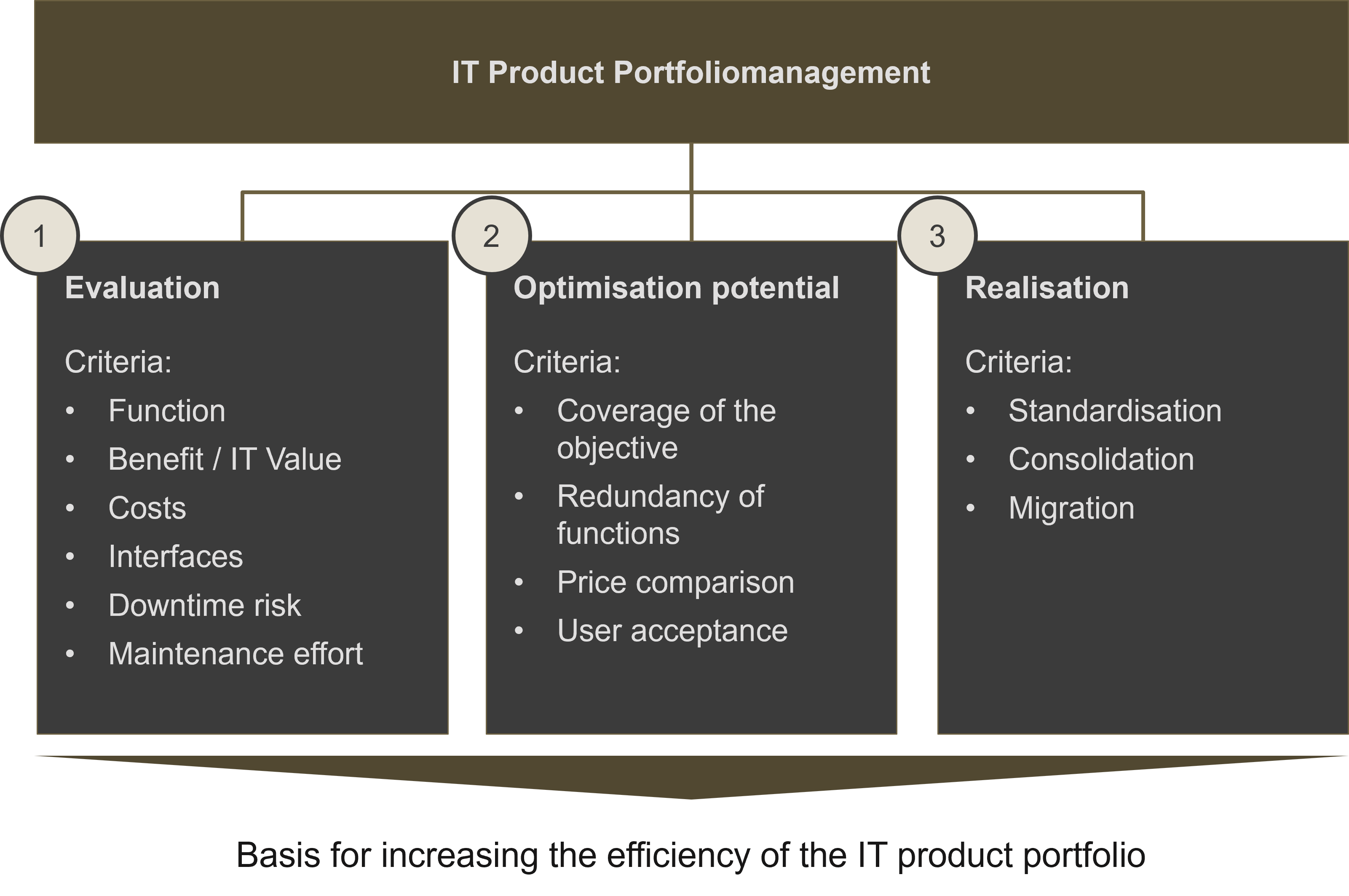Product Portfolio Management – Best Practice
In this article, we show you how we manage your IT product portfolio and present our tried-and-tested approach, which has already helped numerous customers to design and use their IT systems even more efficiently.
Advantages of IT product portfolio management
With the help of IT product portfolio management, it is possible to identify where costs can be reduced, processes standardized and data and functions consolidated. IT product portfolio management shows specifically where and how the productivity of a company’s IT can be increased. This makes it possible to make well-founded decisions regarding IT applications that really add value to the company. We have previously shown in detail why well thought-out IT portfolio management is the decisive factor for a company’s success.
IT product portfolio management with the BAMAC GROUP
In this article, we show you how we manage your IT product portfolio and introduce you to our special approach, which has already helped numerous customers to design and use their IT systems even more efficiently.
Procedure
When assessing an IT product portfolio, the BAMAC GROUP proceeds in three steps.
- Firstly, the existing IT product portfolio is analyzed according to defined criteria.
- Secondly, potential optimizations and the necessary activities in the areas of content, costs and risks are identified.
- Thirdly, the previously identified measures are implemented, prioritized according to their economic importance.
We follow the best practice principle and establish proven analysis criteria in order to obtain precisely the results that provide our customers with an extended and more sound basis for decision-making. The aim is always to simplify our customers’ business processes and at the same time make them more effective. This approach enables our clients to achieve the highest possible increase in value for their company.
The analysis criteria
Asking the right questions is crucial to success. We assign these to the three fields of content, costs and risks. Here are a few examples:
- Content: Which functions/processes are supported by the IT product? Which functions/processes are used by customers?
- Costs: What costs are incurred for development or customizing (change) and maintenance (run)? How productive are these products?
- Risks: What happens if the product is not available? How does the failure affect other systems?
Identify optimization potential
The second step is to determine the potential optimizations and the activities required for this in the fields already mentioned (content, costs and risks). The following questions are asked in order to work out these optimizations:
- Content: To what extent can further process steps or functions be automated? Which functions or process steps are provided multiple times in the products?
- Costs: What cost optimizations can be achieved by
- the reduction of redundant data,
- the reduction of redundant functions and processes,
- the increase in development productivity,
- the standardization of functions (reduction of arabesques),
- the combination of service functions (e.g. service-oriented architecture)
reachable?
- Risks: What is the criticality of individual products? How can failure risks of critical products be reduced?
Specific measures for implementation are then proposed.
The implementation
If desired, the BAMAC GROUP not only proposes measures to improve the performance and efficiency of the IT product portfolio, but also implements them together with the customer. Because the best questions in the world are useless if they are not implemented. This can look like this in the individual fields, for example:
- Contents:
- Standardization of functions and processes
- Consolidation of functions and processes
- Migration of data and applications
- Costs:
- Reduction of costs through reduction of arabesques
- Reduction of costs through further automation of processes
- Increased sales through new products
- Risks:
- Risk reduction through the installation of mirror systems
- Risk reduction by increasing the qualifications of key personnel
- Risk reduction through the introduction of standard software
Overview
The following diagram illustrates the BAMAC GROUP’s IT product portfolio management approach once again.

The BAMAC GROUP’s IT product portfolio management in practice
Of course, IT product portfolio management is even more detailed in practice than described above. This is just an excerpt of the activities within the scope of IT product portfolio management, with which we want to demonstrate our structural approach. As an experienced partner, the BAMAC Group is ready to support companies in IT product portfolio management – with customised solutions that not only promote efficiency and strategic alignment, but also create sustainable business value. The success of our customers motivates us to continuously develop innovative and flexible approaches for the optimisation and management of IT portfolios. Write to us, we look forward to your requirements and a successful co-operation!
Categories of this post
Further interesting posts.




